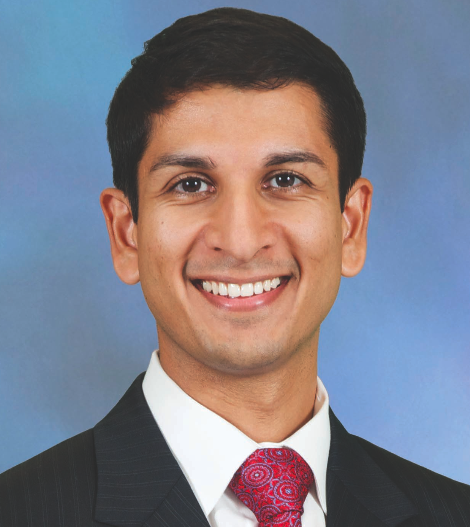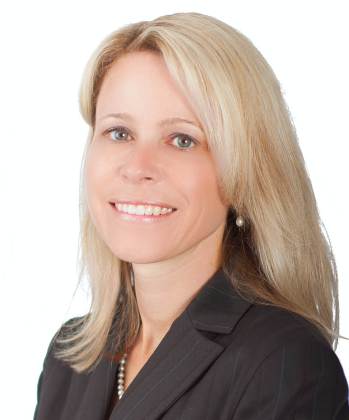Holistic, Targeted, and Individualized Perioperative Care for Cataract Surgery Patients
By Neel R. Desai, MD, and Kendall Donaldson, MD, MS
With the ocular surface and the tear film, in particular, being the first refractive surface of the ocular system, it is critically important to achieving outstanding postoperative results. Obtaining accurate biometry to appropriately select and calculate for IOLs hinges upon a healthy and stable ocular surface.1-5 All too commonly, patients undergo technically perfect surgeries with disappointing outcomes because of the failure to treat the ocular surface preoperatively. In fact, perhaps surgeons should consider the ocular surface first, and refractive outcomes secondary.
Because OSD in patients presenting for cataract surgery is prevalent and can often be underrecognized in part due to the disconnect between signs and symptoms, it is imperative we screen all patients. Trattler and colleagues’ Prospective Health Assessment of Cataract Patients’ Ocular Surface (PHACO) multicenter observational study found 80% of patients presenting for cataract surgery had signs of dry eye even though almost 60% had never complained of foreign body sensation.6 Similar to the PHACO study, Gupta and colleagues reported the incidence of OSD in patients presenting for cataract surgery to be more than 80% with a large majority of patients asymptomatic with no previous history of dry eye disease. Yet 83%, had an abnormal tear osmolarity or matrix metalloproteinase-9 (MMP-9) level.7
As the cataract procedure and IOL technology have advanced, patients’ expectations have increased accordingly. When paying out of pocket for premium lenses, patients view even mild postoperative dry eye or residual refractive error as a failure—they demand near perfection. Not long ago, the ocular surface was rarely mentioned in the context of cataract and refractive surgery, partly because of a lack of diagnostics and treatments. Today the landscape is vastly different; fortunately, we have sophisticated screening tools and therapeutics that allow us to objectively determine the health of the ocular surface so we can effectively differentiate and treat the various forms of disease, which translates into better outcomes.
Getting Patients Onboarded
Ensuring patients have buy-in throughout the process of optimizing the ocular surface requires a partnership. One approach that may be successful for some specialists is “show and tell” using images of patients’ meibography and topography, for example, illustrating gland dropout and areas of dryness, and educating on the implications (Dr Donaldson uses this method). We can explain to them the importance of their treatment regimen, why we are prescribing certain therapies, and let them know we have several different ways to monitor their progress. Screening patients with questionnaires like the Ocular Surface Disease Index and point-of-care tear tests for osmolarity and MMP-9 provide objective measurements patients can follow. We emphasize that we are working together to achieve the best visual results because cataract surgery is really an investment in their future. This resonates with patients.
Patients often do not connect the dots between their OSD and their visual symptoms. Some specialists may favor verbal explanations, paying careful attention to word choice. For example, we can use a car analogy (Dr Desai’s approach). We might say to patients that they have two vision problems one is the windshield—the ocular surface—and one is inside the car—the cataract. Their vision may be like looking out of a smudged windshield; the water does not spread out evenly or the quality of the water is poor. Inherently, the view through that windshield is poor. We tell patients that if we were to perform surgery on the cataract but neglect the surface, we cannot obtain accurate measurements which will compromise the result. It also limits their IOL choices and therefore they may not be as happy with their outcome. We tell them we believe in treating them the right way, not necessarily the fast way. Patients appreciate a surgeon who does not rush to surgery.
Setting Short-and Long-Term Goals
Treatment is dictated by our findings and the etiology of the condition. Criteria like the Dry Eye Workshop and American Society of Cataract and Refractive Surgeons algorithm to help guide treatment;8,9 although specialists must customize therapy to each patient. A vast majority will have some component of meibomian gland dysfunction/evaporative disease which often overlaps other forms of OSD. Some might need an in-office procedure like TearCare (Sight Sciences), LipiFlow (Johnson & Johnson Vision), Systane iLux (Alcon), or IPL; and most patients will require topical treatment such as lubricants, lid hygiene, a heat mask (eg, Bruder, Wizard, Fire and Ice, Tranquileyes), anti-inflammatories, low-dose steroids, and immunomodulators. Omega fatty acid supplements like HydroEye (ScienceBased Health) are also appropriate for many patients.
When thinking of the treatment paradigm in the context of presurgical cataract surgery planning, we have short- and long-term goals. In the preoperative planning stages where the short-term goal is to achieve accurate biometry and hit the refractive target, we call on tools that have an immediate impact such as low-dose steroids. In the setting of epithelial-based diseases, we can use cryopreserved amniotic membranes like ProKera (BioTissue) alone or combined with a superficial keratectomy.
Patients will stay on many treatments we institute preoperatively continuously to ensure optimal visual results for a lifetime. We can set these long-term expectations during the initiation of preoperative therapy, letting them know that cataract surgery is a short-term intervention, but their chronic disease requires a long-term therapy and thus a two-pronged approach.
Role of Nutraceuticals
Nutritional supplements are an important piece of the therapeutic puzzle. When we recommend these products that have overall—not just ocular—health benefits—patients know we have concern for them holistically. A natural approach is appealing to many patients.
HydroEye (ScienceBased Health) is a patented, clinically tested oral dry eye relief formula that contains the unique anti-inflammatory omega-6 fatty acid gamma linolenic acid (GLA), which is not found in our diet at meaningful levels. GLA has been found to stimulate tear production and reduce inflammation in many types of OSD patients.10-16 Along with GLA from black currant seed oil, HydroEye includes other omegas in a specific balance with GLA, plus nutrient cofactors to fatty acid metabolism, like vitamins C, B6, and magnesium. This formula has been shown to improve symptoms, suppress inflammation, and maintain corneal smoothness in a randomized, controlled clinical trial in post-menopausal women.16
Conclusion
Cataract surgery is an investment in our patients’ futures and will determine their quality of vision, affecting how they live, how much freedom they have from glasses, and how their eyes feel.
We tell patients, what you put in is what you get out. To achieve a premium result with premium technology, we need a premium surface. This means using the right products topically and systemically and investing the time pre-operatively to prepare the ocular surface for accurate measurements and successful recovery from cataract surgery.
 Neel R. Desai, MD, Partner, The Eye Institute of West Florida, Tampa Bay, Florida; Medical Director, Lions Eye Bank, Tampa, Florida; Medical Director, Corneal Transplant Research Institute. Dr Desai can be contacted by email at: [email protected]
Neel R. Desai, MD, Partner, The Eye Institute of West Florida, Tampa Bay, Florida; Medical Director, Lions Eye Bank, Tampa, Florida; Medical Director, Corneal Transplant Research Institute. Dr Desai can be contacted by email at: [email protected]
Financial disclosure: Consultant to Alcon, Allergan, BioTissue, Johnson & Johnson Vision, Bausch + Lomb, ScienceBased Health, TearScience, Lumenis, Sight Sciences, Eyevance Pharmaceuticals, Kala Pharmaceuticals, Sun Pharma
 Kendall E. Donaldson, MD, MS, Professor of Clinical Ophthalmology, Cornea/External Disease/Refractive Surgery, and Medical Director, Bascom Palmer Eye Institute, Plantation, Florida. Dr Donaldson can be contacted by email at: [email protected]
Kendall E. Donaldson, MD, MS, Professor of Clinical Ophthalmology, Cornea/External Disease/Refractive Surgery, and Medical Director, Bascom Palmer Eye Institute, Plantation, Florida. Dr Donaldson can be contacted by email at: [email protected]
Financial disclosure: Consultant to Alcon, Allergan, Bausch + Lomb, Carl Zeiss Meditec, Eyevance Pharmaceuticals, Johnson & Johnson Vision, Kala Pharmaceuticals, Lumenis, Novartis, Quidel, ScienceBased Health, Shire, Sun Pharma
Reference
1. Epitropoulos AT, Matossian C, Berdy GJ, Malhotra RP, Potvin R. Effect of tear osmolarity on repeatability of keratometry for cataract surgery planning. J Cataract Refract Surg. 2015;41(8):1672-1677.
2. Kim P, Plugfelder S, Slomovic AR. Top 5 pearls to consider when implanting advanced-technology IOLs in patients with ocular surface disease. Int Ophthalmol Clin. 2012;52(2):51-58.
3. Goldberg DF. Preoperative evaluation of patients before cataract and refractive surgery. Int Ophthalmol Clin. 2011;51(2):97-107.
4. Ale Magar JB. Comparison of the corneal curvatures obtained from three different keratometers. Nepal J Ophthalmol. 2013;5(1):9-15.
5. Manning CA, Kloess PM. Comparison of portable automated keratometry and manual keratometry for IOL calculation. J Cataract Refract Surg. 1997;23:1213-1216.
6. Trattler WB, Majmudar PA, Donnenfeld ED, et al. The Prospective Health Assessment of Cataract Patients’ Ocular Surface (PHACO) study: the effect of dry eye. Clin Ophthalmol. 2017;11:1423-30.
7. Gupta PK, Drinkwater OJ, VanDusen KW, Brissette AR, Starr CE. Prevalence of ocular surface dysfunction in patients presenting for cataract surgery. J Cataract Refract Surg. 2018;44:1090-1096.
8. Craig JP, Nelson JD, Azar DT, et al. TFOS DEWS II report executive summary. Ocul Surf. 2017;15(4):802-812.
9. Starr CE, Gupta PK, Farid M, et al; ASCRS Cornea Clinical Committee. An algorithm for the preoperative diagnosis and treatment of ocular surface disorders. J Cataract Refract Surg. 2019;45:669-684.
10. Barabino S, Rolando M, Camicione P, et al. Systemic linoleic and gamma-linolenic acid therapy in dry eye syndrome with an inflammatory component. Cornea. 2003;22(2):97-101. doi: 10.1097/00003226-200303000-00002.
11. Macrì A, Giuffrida S, Amico V, et al. Effect of linoleic acid and gamma-linolenic acid on tear production, tear clearance and on the ocular surface after photorefractive keratectomy. Graefes Arch Clin Exp Ophthalmol. 2003;241(7):561-566. doi: 10.1007/s00417-003-0685-x.
12. Aragona P, Bucolo C, Spinella R, et al. Systemic Omega-6 essential fatty acid treatment and PGE1 tear content in Sjogren’s syndrome patients. Invest Ophthalmol Vis Sci. 2005;46:4474-4479. doi: 10.1167/iovs.04-1394.
13. Kokke KH, Morris JA, Lawrenson JG. Oral omega-6 essential fatty acid treatment in contact lens associated dry eye. Cont Lens Anterior Eye. 2008;31:141-146. DOI: 10.1016/j.clae.2007.12.001
14. Pinna A, Piccinini P, Carta F. Effect of oral linoleic and gamma-linolenic acid on meibomian gland dysfunction. Cornea. 2007;26(3):260-4. doi: 10.1097/ICO.0b013e318033d79b.
15. Brignole-Baudouin F, Baudouin C, Aragona P, et al. A multicentre, double-masked, randomized, controlled trial assessing the effect of oral supplementation of omega-3 and omega-6 fatty acids on a conjunctival inflammatory marker in dry eye patients. Acta Ophthalmol. 2011;89(7):e591-7. doi: 10.1111/j.1755-3768.2011.02196.x.
16. Sheppard JD, Singh R, McClellan AJ, et al. Long-term supplementation with n-6 and n-3 PUFAs improves moderate-to-severe keratoconjunctivitis sicca: a randomized double-blind clinical trial. Cornea. 2013;32:1297-1304. doi: 10.1097/ICO.0b013e318299549c.

